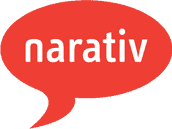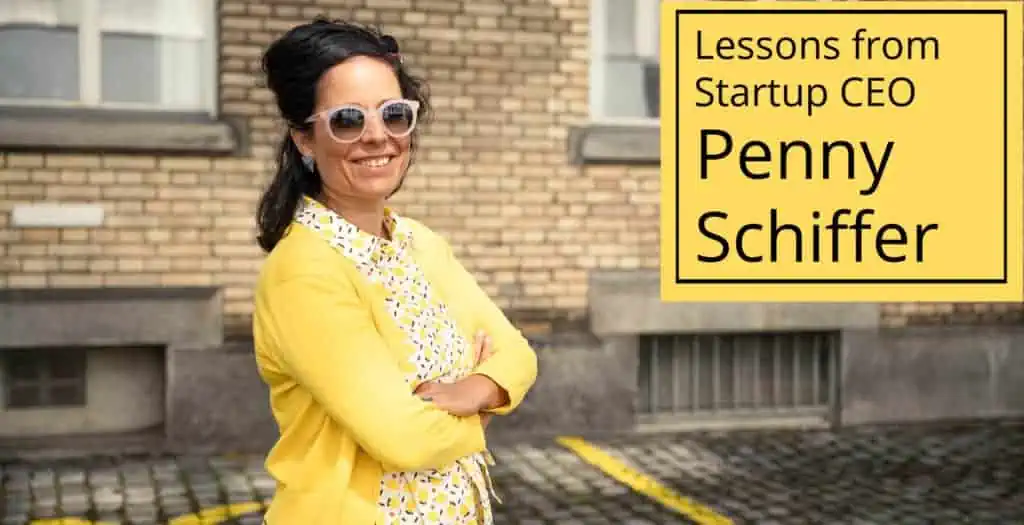Most people have seen Shark Tank or Dragon’s Den or one of many other reality shows that showcase a certain idea of venture capitalism. It’s dramatic, and we see people cry, laugh, and sometimes just stand there in stunned silence. It’s an exciting prospect.
Recently on Narativ’s podcast StoryTalks, Jerome Deroy and Julienne Ryan had the chance to talk with Penny Schiffer, the CEO of her own startup Raized.ai. And what is it that her company does? She helps venture capitalists sort through the thousands of businesses they could invest in to help them narrow down their choices so they can make educated decisions. She stressed her company does not make the decision for them but simply helps reduce the options while validating them for investment.
A Venture Capitalist’s Journey to Startup CEO
Penny’s company started like many others we hear about: with a conversation. While aboard a long daytime flight to San Francisco, after several failed attempts to sleep, she struck up a conversation with a man who was starting an AI firm in the FinTech space. As the conversation wore on she had a lightbulb moment. She asked herself: “How can it be that we as investors are so old-fashioned that we don’t use new technologies to make our own business better—all while investing in companies that use technology to make other people’s lives better?”
This realization led to the creation of her own business to help solve that question. But, as Jerome, Julienne, and Penny discussed, that moment of creation is only the beginning of the entrepreneur’s journey. From there, all entrepreneurs need to continue to mold their idea and eventually pitch it to investors.
The Honeymoon Phase
One important learning Penny shared from her entrepreneurial journey is the need to be adaptable. In her conversation with Jerome and Julienne, Penny shared an experience she has had from time to time when talking to entrepreneurs who are still early on in their ventures.
She says, “I envy them—and also I don’t envy them. They are still in the complete honeymoon phase of this idea. They think the sky is the limit, that you can do anything with data, and it’s completely easy. They have brilliant ideas, and I was the same… I envy them for what they don’t know… they won’t do all these things, but they will do different things.”
In order to make it through the honeymoon phase, an entrepreneur needs to stay adaptable and be willing to let their ideas change and evolve. As they learn and mature their ideas do so as well.
In the same way, stories change and mature as we learn more and as we address new and different audiences. It’s once entrepreneurs develop that story that they’re ready to customize their pitch to their audience and send it home with a swing.
Tailoring the Pitch
Whenever entrepreneurs deliver their pitch it’s important to make sure it’s tailored to fit. In the same way a story we tell our friends might vary from a story we tell our mother, a pitch can vary based on the audience being addressed. Whether those differences are in their priorities or the continent they are from, storytelling in a pitch is one of the most important factors to include. A story can engage, build trust, and promote. If you are feeling a little lost, don’t worry; Penny shared the differences that she’s noticed between audiences in Europe and America—whether they’re investors or customers.
European Investors
Penny shared that European investors often focus more on what the pitching entrepreneur has already achieved: revenue, reports, and user numbers. Where you want the business to go or what you feel its potential is matters less to them than the actual numbers you’ve already proven. Pitches to these investors should focus more on the results of the venture rather than its potential.
American Investors
Meanwhile, in America, successful pitches are much more focused on the long-term vision. Investors want to know the endgame. If it all goes well what are you building? They want to see how big, grand, and amazing your idea can become. In these pitches, you need to paint a picture—and what better way to do that than to tell a story.
Investors vs. Customers
An additional thing Penny brought up is that she often feels she has to ask “are you thinking about it as customers or as investors?” It’s important to realize that the priorities of investors and customers are typically very different. Investors want products that are expensive with large margins, while customers want to make sure they are getting a competitive price and aren’t overpaying for a product or service.
No matter who the audience is, we have to adjust our message for each one. Because needs and priorities are different, entrepreneurs must offer answers that show they share the same concerns. And once we’ve tailored our message and delivered our pitch, then what?
The Hollywood Pitch and the Conversation After
The elevator pitch has become iconic in the US. A young entrepreneur gets a short moment to sell their idea with eloquently placed words and fiery passion. After the pitch, the investor enthusiastically shakes the young entrepreneur’s hand and tells them to come by their office. The scene then fades to black and picks up with the idea in full swing. …and that’s where many stories end.
But one thing Jerome, Julienne, and Penny discussed in the podcast is what to do after the big pitch. The part often skipped in these Hollywood iterations is the conversation that happens between the pitch and getting to work.
Julienne brought up that we “tend to train for the big Hollywood moment here [in America]. They are already writing the script for when it comes out in the movie form…”—and that isn’t bad necessarily. But it’s critical for entrepreneurs to be ready to have the conversation after the lights go dim and they leave the stage. If investors are brought in by the pitch, they are going to want more details. Entrepreneurs must be prepared for that more casual, in-depth discussion with industry professionals about where to go next.
And even at this point, we can use stories to communicate well. We used a story to sell our product; now we can use them to sell ourselves.
Using a Story to Sell Yourself
Penny also shared a story about learning statistics in college. She said that although it was hard, it helped her understand so much of the data she now consistently works with. What stood out to her was that that knowledge really hadn’t served her until she embarked on her own entrepreneurial journey.
At this point, Jerome chimed in and pointed out that a story like that doesn’t only instill the importance of knowledge (even knowledge that seems less directly applicable); it can also show investors that she knows what she is doing. It gives them confidence—both in her and her product.
Jerome went on to discuss how “everything is fair game in terms of your story.” We want to tell the best story we can to attract investors and others to our cause and then inspire them to action. Some of the gems from your history can inspire confidence in your product and you as well. Don’t be afraid to take a deep dive into your past and pull some nuggets out that you might have otherwise forgotten.
It’s All In the Story
The journey of a startup is exciting, and it has so much intricacy. It can be hard to feel confident in your idea or know how you should go about making it a reality. But at the center of every entrepreneurial journey is a story: the story of how you made the idea and the story of how it will grow into a huge success. If you want to hear this full episode of the StoryTalks podcast you can listen to it here.
If you are interested in learning more, Jerome is always happy to discuss how storytelling can help you reach new heights.




![Building a Story for Your Startup 4 A quote box with a quote from Julienne Ryan that says, “tend to train for the big Hollywood moment here [in America]. They are already writing the script for when it comes out in the movie form…”](https://narativ.com/wp-content/uploads/2022/01/JR-quote.webp)


